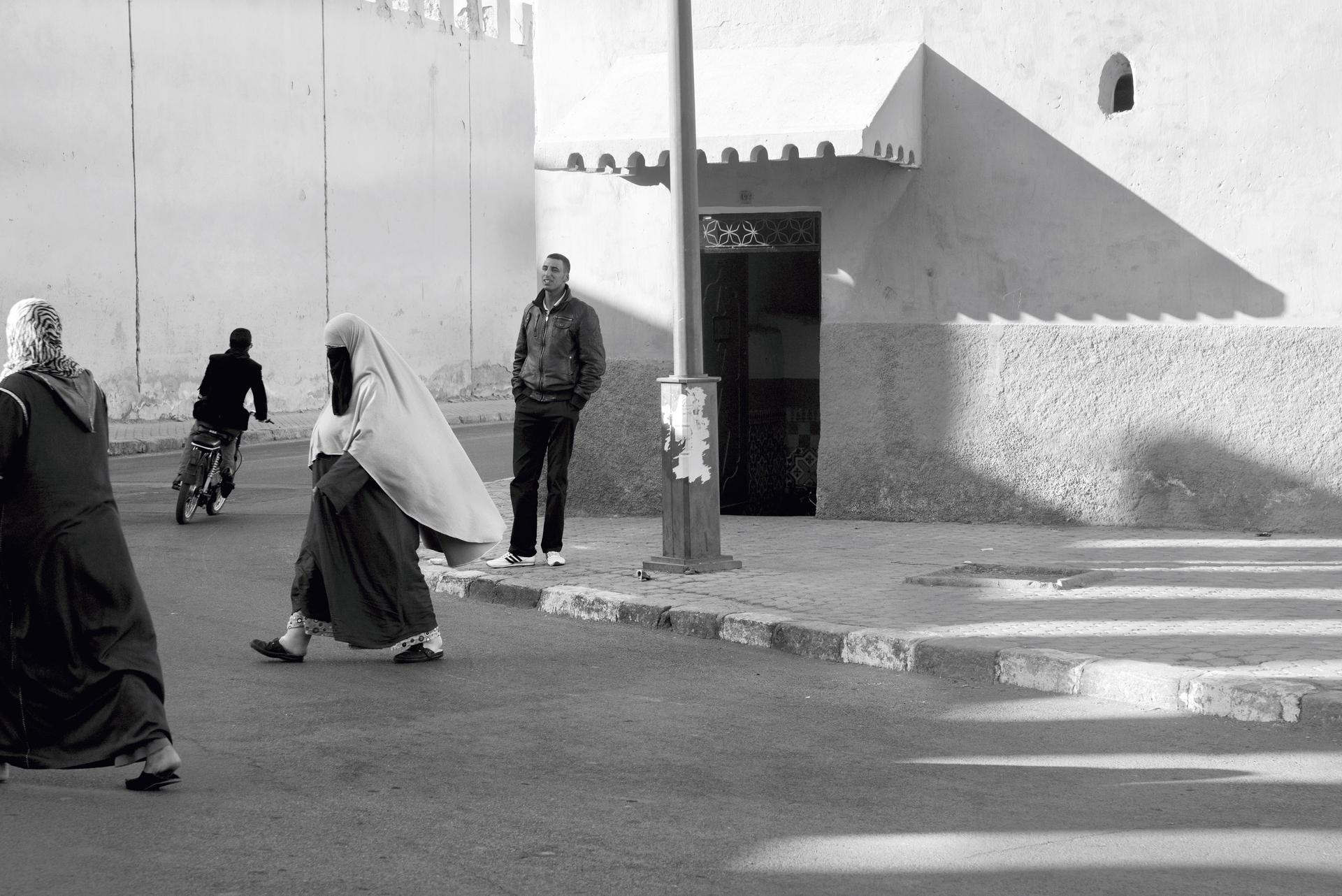Morocco will soon be home to the world’s largest museum devoted to photography
One of the photos taken by Magnum photographer Abbas as part of his project for the Marrakesh Museum of photography and visual arts. Shadows play a major part in his series.
Plans are under way in Morocco, to create the world's largest space devoted to photography.
Recently, to draw attention to the new Marrakesh Museum for Photography and Visual Arts, organizers invited a group of well-known photographers to spend a week in Marrakesh documenting their encounters with the city and its people. Abbas, an Iranian-born photographer living in Paris, took them up on their offer.
"My whole experience was defined by the first steps I took in the narrow streets of the Medina, the old city," he says. "A little girl saw me and I had my camera in my hand — and I had no intention of photographing her — and she points her finger to me, very aggressively, and she says (in Arabic) don’t you dare take my photograph."
Not exactly what you want to hear if you are a photographer on a deadline.
Abbas says he'd visited Morocco 20 years ago for a photography project. This time, he got a sense things had changed.
"Then, people were much more relaxed. Now, they are adverse to photography," he says.
Abbas says one reason Moroccans don't feel comfortable being photographed is the large number of tourists who flock to the country every year.
"Marrakesh used to be an elite destination … Winston Churchill, Yves Saint Laurent went there. Now it’s mass-market. It’s mass tourism," he says.
And those tourists carry cameras.
"People were telling us 'why are you taking our photos? We’re not monkeys.'"
So then Abbas came up with an idea: to take photos of shadows, rather than people.
"People just become a part of the shadow. You see, a shadow is a projection of reality … and as my work went along, I could see that the shadows were becoming an allegory of the city," he says.
The results were striking black-and-white images of Moroccans with their backs to the camera, as well as lots of shadows. In one image, a woman holds up her hand to hide her face from the photo being taken.
But Abbas wasn't the only one who noticed the change in Moroccans' attitude towards photography. So did Susan Meiselas, another member of the team invited to take part in the exhibit.
Meiselas says she was particularly interested in Moroccan women and "how modernity and the changes in the society around them are impacting their lives."
The fact that Moroccans didn't like being photographed raised another question for her. Was having a portrait made something that was seen as a gift or was it seen as an economic exchange?
To find out, she set up a pop-up studio near a cafe in the middle of the spice market.
"It was a very simple construct. It was really just a black cloth and a white sheet to diffuse the light, and a camera and a tripod. Nothing very fancy," she says.
Anyone who wanted their portrait taken had two choices. They could either request to receive a copy of their portrait or get paid 20 Dirham (about $2.50).
Meiselas says she had no idea if anyone would come. But in the end 78 women showed up. Some took the money and others requested a copy of their portrait.
"What was very meaningful to me in particular, perhaps, was that a number of the women that we photographed and had given permission for their photographs to be on the walls [of the exhibit] then came to see themselves on the walls," Meiselas says. "That probably was for me the most important part of the week."
But while Moroccans might not appreciate being subjects of photography experiments, that doesn't mean there is no interest in the art.
Karen Ruimy, a Moroccan herself, is providing some of the financing for the museum. She says news about the initiative has created a buzz in Marrakesh.
"The reaction from the young generation is amazing," she says. "They are very hungry for any opening of an institution that's going to bring art to them, because art means freedom of expression."
Ruimy, a financier turned flamenco dancer and singer, left Morocco for France when she was a child. She says creating this museum is a way to give back to her home country and start a bigger conversation about photography and visual arts.
And it just might be a step toward breaking down years of mistrust brought on by the tourism industry. The exhibition is currently being held in the historic El-Badi palace — a temporary location for the museum.
Once the main museum opens in 2016, it will house a small, permanent collection, as well as rotating exhibits.
Every day, reporters and producers at The World are hard at work bringing you human-centered news from across the globe. But we can’t do it without you. We need your support to ensure we can continue this work for another year.
Make a gift today, and you’ll help us unlock a matching gift of $67,000!
